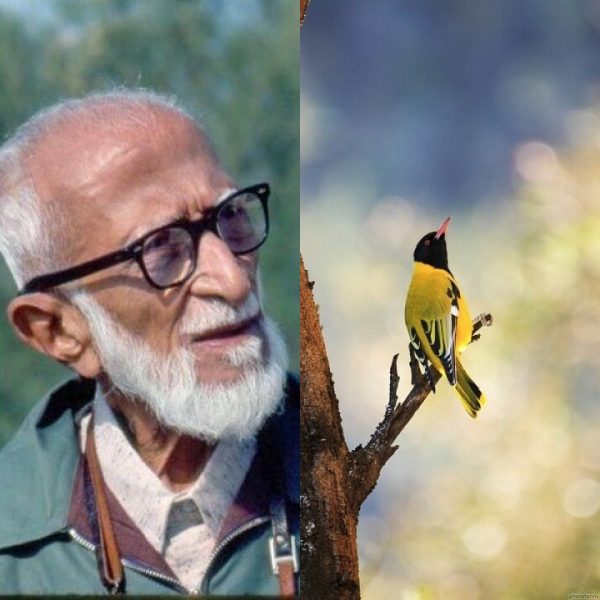
'Salim Ali Bird Count': A rare chance to know more about our feathered friends

Are you curious about birds and want to know their numbers in your city/town? Here’s your chance: The Bombay Natural History Society (BNHS) will be celebrating the birth anniversary of ornithologist Dr Salim Ali (November 12) by holding ‘Salim Ali Bird Count’ between November 5 and 12.
You don’t need to be an expert on birds to participate in the survey; what you need though is curiosity and interest in our feathered friends. “We request you to observe and record birds in your chosen area, preferably for more than one hour and upload your checklist on IoB (Internet of Birds) or eBird mobile applications (iOS and Android phones). A checklist of bird species is available on both the apps,” says Raju Kasabi, organiser of the event. All that the participant needs to do is visit the nearest biodiversity area or any site such as a waterbody or wooden patch and observe birds for more than an hour to make the count meaningful. The minimum count time should be 15 minutes, said Kasabi.
The event, organised in association with Bird Count India (birdcount.in), Maharashtra Pakshimitra Sanghatana and Indian Bird Conservation Network (IBCN), is a tribute to the “Birdman of India” Dr Salim Ali (1896–1987), who popularised ornithology in India by conducting systematic and scientific bird surveys. He wrote several books on birds including the widely read “The Book of Indian Birds.” Ali’s contribution towards bird research and conservation in the country remains unparalleled.
Also read: New book for educators teaches children to become budding birders
In 2020, the Maharashtra government issued a resolution to celebrate a bird week from November 5 to 12 every year. While November 5 is the birthday of noted Marathi naturalist-writer Maruti Chitampalli, November 12 is the birth anniversary of veteran ornithologist Salim Ali. Hence the two dates were picked up to observe a bird week annually. “Normally, we used to organise the event on a Sunday closer to Salim Ali’s birth anniversary. It was a one-day event, but from this year, we are organising it for a week. Despite pandemic restrictions, the bird count in 2019-20 recorded more than 800 species across India. We hope, this year, we will have more sightings,” said Kasabi.
A collaborative project managed by Bird Count India, eBird is an online platform for bird watchers to register their observations in a systematic manner. You can download the eBird mobile application ( https://play.google.com/store/apps/details?id=edu.cornell.birds.ebird) which is available for both google play and App stores. If you are using the IOB mobile application, you may download it for Android (https://tinyurl.com/DownloadIOB) and for iPhone (https://tinyurl.com/IoB)

Click on the ‘contributors’ icon present at the base of this app. Select “Contribute to Common Bird Monitoring Programme (CBMP)” and press the OK button. Bird checklist will appear on your screen. Click the “+” options that are present in front of the species names. After entering the total number of every individual bird, click on the “review” button. Cross-check the names of all the species before submitting the checklist. Once you click on the “submit” button, your mailbox will open. Thereafter, fill the required information before sending the email.
Salim Ali Bird Count is a Citizen Science initiative, conducted together with different organizations. You can visit your nearest Important Bird and Biodiversity Area (Full IBA book link:- http://bnhsenvis.nic.in/Database/Important-Bird-And-Biodiversity-Areas-In-India_18738.aspx ) or any site like a water body or a wooded patch and record birds individually or in a group, preferably for over an hour to make the count more meaningful. “Counts are generally productive early in the morning; birds tend to become quiet and inactive during the middle of the day. We request the birdwatchers to not restrain themselves to this one-time event, but monitor the chosen area consistently in the coming years,” says a release from BNHS.
Also read: Study in Anamalai Hills: Plant native trees to attract birds in tea plantations
The Indian subcontinent is very rich in biodiversity. “Out of more than 10,000 birds of the world, the Indian subcontinent harbours about 1,300 species, about 13% of the world’s bird diversity. This subcontinent, rich in avifauna, also boasts of 106 bird families out of the total 213 families in the world,” says a study conducted by BNHS. Birds such as Sarus Crane and the Himalayan Bearded Vulture are considered the tallest Indian birds, while flowerpeckers are considered the smallest.
The idea of the bird court, according to Raju Kasabi, is to create awareness among amateurs about the birds around them. “We come across many birds every day, but we don’t know the names of many, barring a few. We are organising this week-long bird count to include more amateurs in the initiative. We can create awareness among people about birds and protect their habitat through bird counts like this,” he added.



